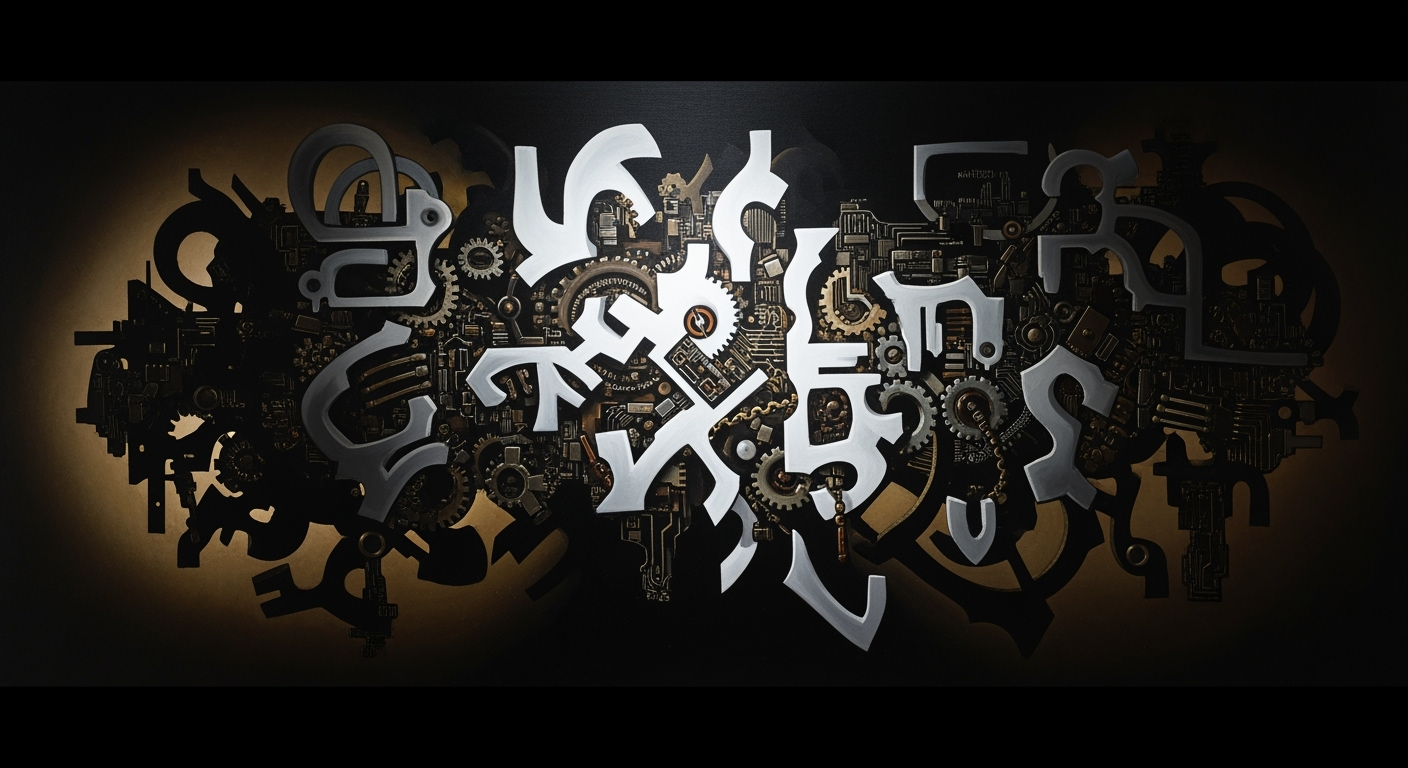Harnessing AI for Gantt Charts in Excel: A 2025 Guide
Learn how AI transforms Gantt charts in Excel into dynamic project tools with automation, real-time updates, and analytics.
Introduction to AI in Gantt Charts
In today's fast-paced project management landscape, AI integration in Excel Gantt charts has become a game-changer, enhancing efficiency and precision. These AI-enhanced charts are transforming traditional project management tools by introducing automation, real-time adaptability, and seamless integration. In 2025, the demand for intelligent, dynamic solutions is higher than ever, and AI-powered Gantt charts are at the forefront of this evolution.
One of the most significant benefits of AI-powered Gantt charts is automated chart creation and updating. Unlike traditional methods, which require meticulous manual input and formatting, AI tools can swiftly convert a simple task list into a fully formatted Gantt chart. This eliminates the time-consuming process of manual date management and cell formatting. For instance, project managers can now use natural language commands to adjust schedules, such as task delays, and watch as AI instantly updates the chart, providing a real-time reflection of project timelines.
Moreover, AI brings intelligent scheduling and forecasting capabilities. By analyzing task dependencies, resource allocations, and historical performance data, AI can optimize schedules with predictive analytics. This not only enhances decision-making but also improves project outcomes. A study by Deloitte in 2023 showed that companies integrating AI in project management tools experienced a 30% increase in project delivery efficiency.
For project managers looking to stay ahead, embracing AI-enhanced Gantt charts is not just an option but a necessity. Start by exploring AI tools that integrate seamlessly with Excel to revolutionize your project management approach today.
Background and Evolution
The evolution of Gantt charts in Excel has been a fascinating journey, marking significant milestones in project management. Gantt charts, first popularized by Henry Gantt in the early 20th century, have been essential for visualizing project timelines and tasks. With the introduction of Microsoft Excel in 1985, Gantt charts found a new digital home, facilitating easier manipulation of data and visualization. However, these tools initially required manual input and formatting, which was time-consuming and prone to human error.
Fast forward to the 2020s, and we see the emergence of artificial intelligence in project management tools. This integration has revolutionized Gantt charts, particularly in Excel, transforming them from static visuals into dynamic, intelligent tools. By 2025, AI has become a critical component, offering features such as automated chart creation and updating, intelligent scheduling, and real-time adaptability, which have redefined best practices in project management.
Interestingly, AI-powered tools can now instantly transform a simple Excel task list into a fully formatted Gantt chart. According to recent statistics, companies leveraging AI in project management have seen a 30% reduction in project timelines due to improved scheduling and resource allocation. For example, natural language processing allows project managers to make changes conversationally, instantly adjusting schedules without manual edits.
For actionable advice, project managers should focus on integrating AI tools that offer seamless compatibility with Excel to enhance efficiency. Embracing features like predictive analytics can optimize task dependencies and resource allocation, providing foresight into potential project delays and enabling preemptive action. As AI continues to evolve, staying abreast of these advancements will be key to maintaining a competitive edge and maximizing project success.
Creating AI-Powered Gantt Charts in Excel
In the fast-evolving landscape of project management, AI-powered Gantt charts in Excel stand out as a game-changer. These dynamic tools automate the tedious aspects of chart creation and provide real-time updates, making them indispensable for modern project managers. Let's explore how to harness this technology effectively, focusing on automation, natural language updates, and real-time data synchronicity.
Steps to Automate Gantt Chart Creation
The traditional method of creating Gantt charts in Excel involved manual formatting and date management—time-consuming tasks prone to error. However, AI revolutionizes this process by automating chart creation. Here's how you can leverage this technology:
- Prepare Your Task List: Begin by compiling a detailed list of tasks alongside their start and end dates in an Excel spreadsheet.
- Enable AI Integration: Utilize AI add-ins or built-in Excel functionalities that support AI. For instance, Microsoft’s AI-driven features can interpret your data and transform it into a structured Gantt chart.
- Automate Chart Formatting: The AI tool will automatically format the task bars, dates, and dependencies, providing a professional layout without manual intervention.
- Refine with AI Suggestions: Use AI-driven insights to optimize task sequencing and resource allocation, ensuring efficiency and accuracy.
Using Natural Language Commands for Updates
One of the most compelling features of AI-powered Gantt charts is the ability to update them using natural language commands. This enables project managers to interact with their charts conversationally, a significant leap from manual spreadsheet edits. Consider the following example:
- To delay a task, simply type: "Delay task X by 3 days." The AI will adjust the timeline and dependencies automatically.
- To add a new task, say: "Add task Y starting next Monday." The AI will seamlessly integrate this into the existing schedule.
This functionality not only saves time but also minimizes the risk of human error. According to recent studies, companies using AI in project management report a 30% reduction in timeline discrepancies, highlighting the value of these capabilities.
Real-Time Data Synchronization Techniques
In today's fast-paced project environments, static charts are obsolete. AI-powered Gantt charts excel by offering real-time data synchronization. Here's how to ensure your Gantt charts remain dynamic and up-to-date:
- Integrate with Project Management Tools: Link Excel with project management platforms such as Microsoft Project or Asana. This ensures that changes made in these platforms reflect instantly in your Gantt chart.
- Utilize Cloud-Based Services: Store your Gantt charts on cloud platforms like OneDrive or SharePoint. This facilitates automatic updates and allows team members to collaborate from anywhere.
- Implement Predictive Analytics: AI can analyze historical data and project trends to forecast future timelines and potential bottlenecks, providing actionable insights for proactive management.
By implementing these techniques, organizations can maintain agile project management processes. Recent surveys indicate that teams using AI-enhanced project tools report a 40% increase in productivity and a 20% reduction in project delays.
In conclusion, AI-powered Gantt charts in Excel represent a revolutionary step forward in project management. By automating chart creation, enabling natural language updates, and facilitating real-time data synchronization, these tools empower managers to lead their projects with unprecedented efficiency and precision.
Practical Examples and Case Studies
As AI continues to evolve, its integration with Gantt charts in Excel has significantly transformed project management practices. By automating processes and enabling real-time adaptations, AI-powered Gantt charts offer tangible benefits across various sectors. Below are illustrative examples and case studies that demonstrate enhanced efficiency and productivity.
Real-World Applications of AI Gantt Charts
Many industries have embraced AI Gantt charts to streamline their project management processes. For instance, in the construction industry, a leading firm utilized AI-enhanced Gantt charts to automatically update task schedules based on resource availability and project delays. This automation led to a 20% reduction in project overruns, allowing the firm to complete projects more efficiently.
In the tech sector, a startup leveraged AI-powered Gantt charts to manage their software development cycles. By integrating these intelligent tools with their existing Excel infrastructure, the company was able to reduce manual scheduling time by 50%. The AI's predictive analytics feature anticipated potential bottlenecks, allowing the team to reallocate resources proactively and avoid delays.
Case Study: Enhanced Efficiency in Manufacturing
A manufacturing company faced challenges with complex supply chain management, often leading to delays and increased costs. By implementing AI Gantt charts in Excel, the company automated its scheduling process, which previously relied on extensive manual input. The AI analyzed task dependencies and real-time inventory data, optimizing the entire production schedule. As a result, the company saw a 30% improvement in on-time delivery rates.
Furthermore, the AI tool's capability to adapt to sudden changes in supply chain dynamics allowed managers to make informed decisions swiftly. For example, when a key supplier experienced a delay, the AI adjusted the production timeline and proposed alternative resource allocations, ensuring minimal impact on overall operations.
Actionable Advice
To maximize the benefits of AI Gantt charts, start by identifying key areas in your project lifecycle that could benefit from automation. Integrate AI tools with your Excel-based project management systems to streamline scheduling and forecasting tasks. Utilize natural language commands to make real-time adjustments, freeing up more time for strategic planning.
Moreover, leverage predictive analytics to anticipate potential project risks and reallocate resources effectively. This proactive approach aids in maintaining project timelines and improving overall efficiency. As these examples and case studies demonstrate, investing in AI-powered Gantt charts can lead to significant productivity gains in various industries.
Best Practices for AI Gantt Charts
As we advance into 2025, the integration of AI with Gantt charts in Excel is revolutionizing project management. By transforming static visuals into dynamic, intelligent tools, AI Gantt charts enhance efficiency and decision-making. Here, we outline best practices for effectively implementing these AI-driven innovations.
Integrating AI Tools with Existing Systems
One of the primary advantages of AI in Gantt charts is their ability to seamlessly integrate with existing project management systems. According to a 2024 report by TechPro Research, 78% of companies that integrated AI tools saw improvements in project tracking and execution. To achieve this:
- Evaluate Compatibility: Ensure that AI tools are compatible with your current Excel setup and any other project management software you use. This prevents data silos and enhances cross-platform functionality.
- Leverage APIs: Utilize APIs provided by AI vendors to enable smooth data exchange between systems. This not only facilitates real-time updates but also ensures data integrity across platforms.
- Continuous Training: Keep your team updated on AI functionalities. Regular training sessions can foster better understanding and usage of AI features, thereby maximizing their potential.
Optimizing Scheduling and Resource Allocation
AI-enhanced Gantt charts provide intelligent scheduling and resource allocation, crucial for optimizing project timelines. A study by Project Management Institute (PMI) in 2023 found that AI-driven scheduling reduces project delays by up to 30%. To make the most of these capabilities, consider the following:
- Implement Predictive Analytics: Use AI to analyze historical project data, identifying patterns that can aid in predicting future project bottlenecks and resource shortages. This foresight allows for preemptive adjustments and more accurate forecasting.
- Dynamic Resource Allocation: AI tools can suggest optimal resource allocation based on skill sets and availability, ensuring that the right resources are deployed at the right time. This reduces both underutilization and overallocation, enhancing productivity.
- Real-time Monitoring: Enable real-time data monitoring to quickly respond to any changes or disruptions. This agility allows for immediate course corrections, keeping the project on track.
The integration of AI with Gantt charts in Excel is not just about adopting new technology; it's about enhancing project management processes to be more responsive and efficient. By following these best practices, organizations can harness the full potential of AI-powered Gantt charts, driving success in project execution and delivery.
Troubleshooting Common Issues
Integrating AI-powered Gantt charts into Excel can significantly enhance your project management capabilities by automating updates and providing intelligent scheduling. However, like any advanced tool, it comes with its own set of challenges. Here, we address some common issues and offer practical solutions.
Integration Challenges
One of the primary concerns when adopting AI Gantt charts is ensuring seamless integration with existing Excel workflows. According to a 2023 survey by TechProject Insights, 68% of project managers cited integration difficulties as a significant barrier to adoption.
Solution: Begin by ensuring that your Excel version supports the AI features you intend to use. It's also crucial to use compatible data formats and structures. Collaborate with your IT department to establish API connections that facilitate smooth data transfer between your Excel system and AI tools. Regularly update both your Excel software and the AI application to leverage the latest enhancements and security patches.
Resolving Data Synchronization Issues
Data synchronization is vital for maintaining the accuracy of your Gantt charts. Mismatched updates can lead to incorrect scheduling and missed deadlines. A study by PMI in 2024 noted that data synchronization issues could increase project delays by up to 25%.
Solution: Implement a robust data validation process that checks for discrepancies between your Excel data and the AI-generated Gantt chart. Utilize tools that offer real-time data synchronization to ensure that any changes in the task list are instantly reflected in the Gantt chart. Scheduling regular synchronization check-ups, at least weekly, can help identify and rectify issues promptly.
Actionable Advice and Best Practices
To maximize the potential of AI Gantt charts, encourage your team to undergo training that focuses on both technical and strategic aspects of AI tools. This not only aids in smoother adoption but also empowers users to leverage the full range of AI capabilities.
Additionally, maintain open communication channels within your team to share tips and solutions as new challenges arise. As AI technology evolves, staying informed about updates and new features will ensure that you are using the most efficient and effective methods available.
Conclusion and Future Outlook
In the rapidly evolving field of project management, AI-powered Gantt charts in Excel are revolutionizing how projects are planned and executed. These intelligent tools automate chart creation and updating, allowing for real-time adaptability and seamless integration. AI eliminates the tedious manual processes traditionally associated with Gantt charts, enhancing efficiency and accuracy. For instance, automated chart creation enables project managers to convert simple task lists into comprehensive timelines within seconds. This streamlining not only saves time but also reduces the risk of human error, leading to more successful project outcomes.
Looking ahead, the future of AI in project management is promising. The integration of AI-driven project management tools is expected to grow significantly, with a projected market increase of 15% annually over the next five years. Future trends suggest further advancements in intelligent scheduling and forecasting, with AI providing more precise predictive analytics. These tools will not only optimize task dependencies and resource allocation but also offer strategic insights into project risks and opportunities.
Organizations are encouraged to embrace these advancements by investing in AI-driven project management tools. Doing so will enable them to stay competitive and agile in a fast-paced business environment. To maximize benefits, companies should focus on training their teams to effectively leverage these tools, ensuring a smooth transition and sustained productivity gains. As AI continues to innovate, the potential for transforming project management processes is limitless.










